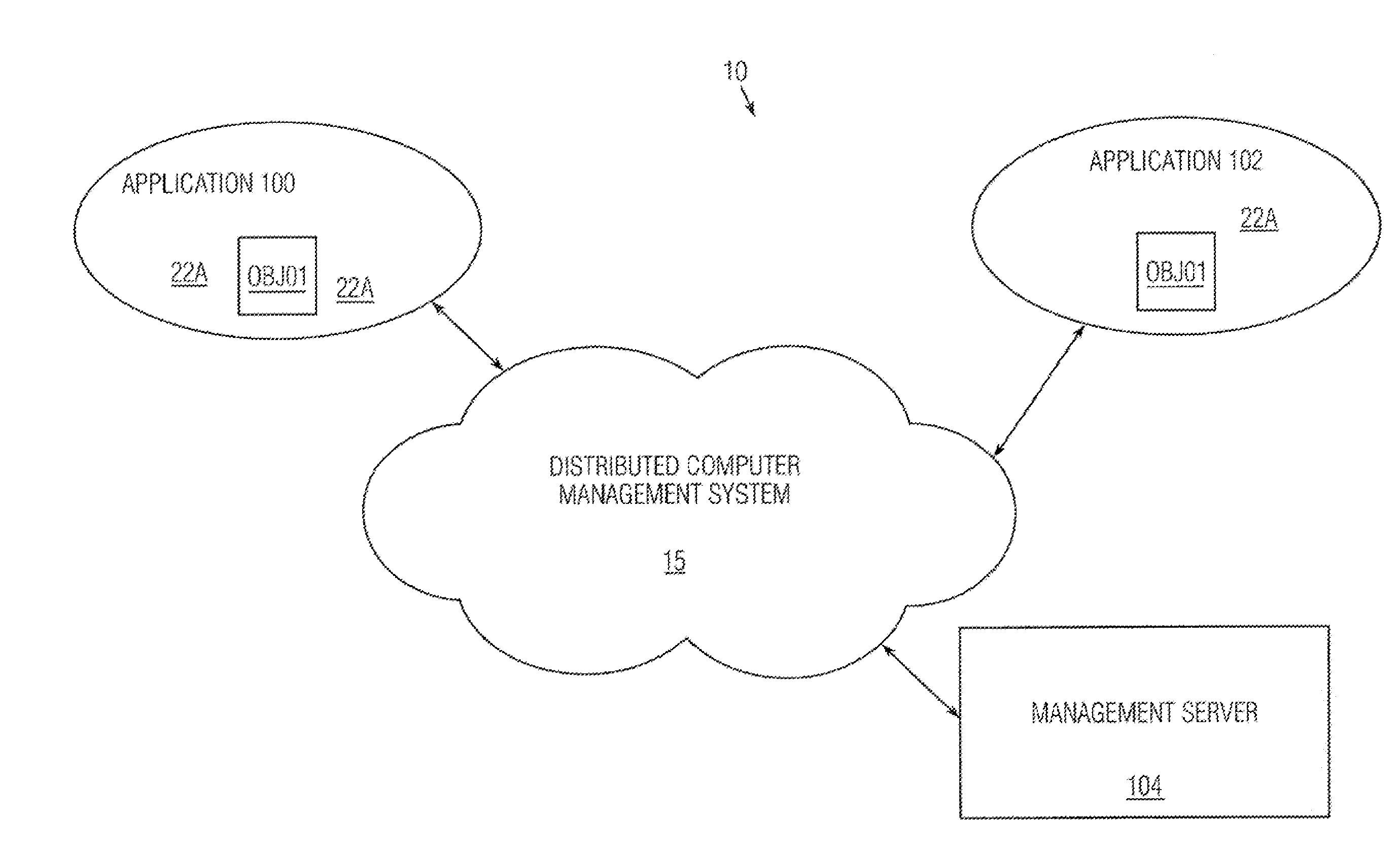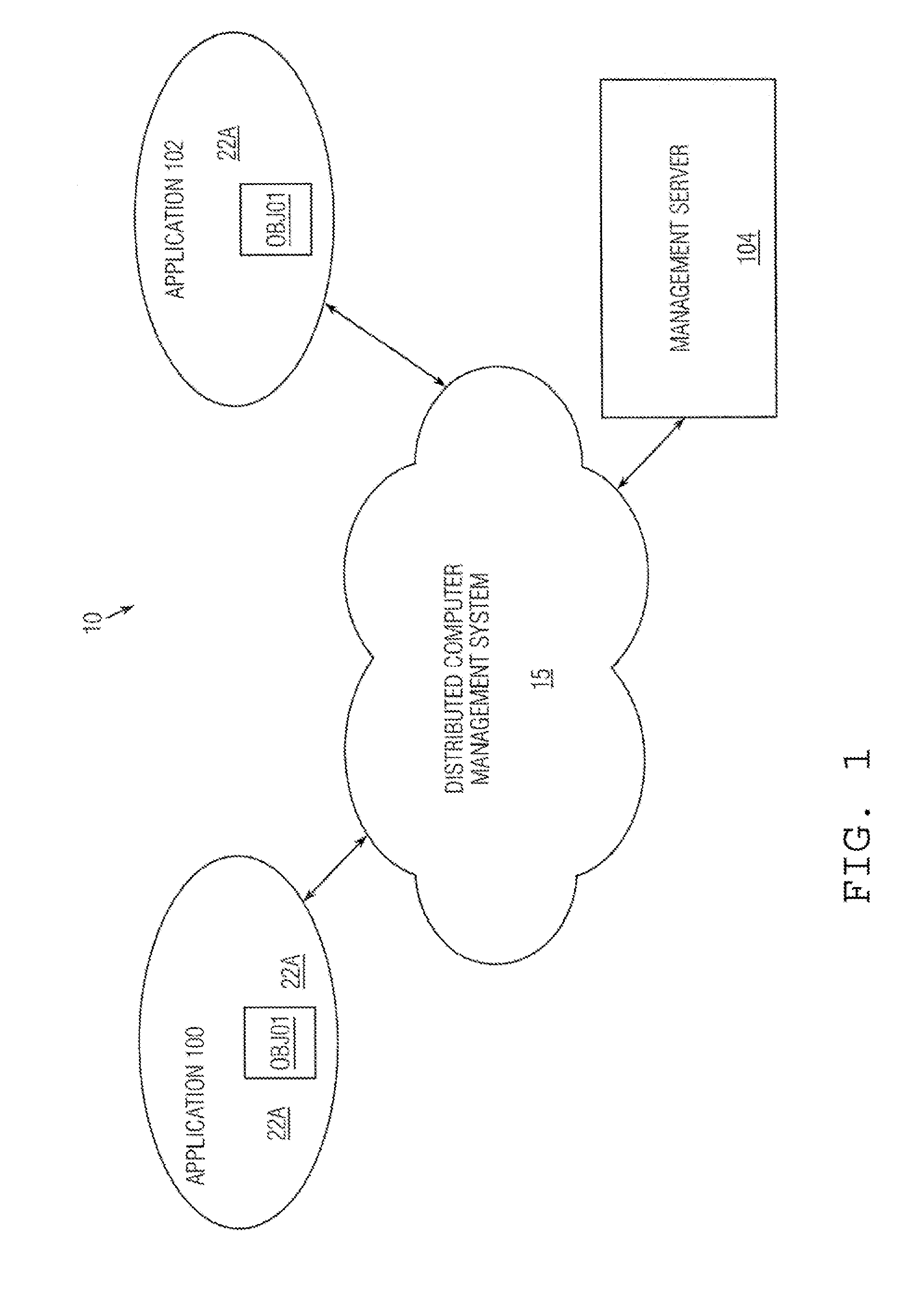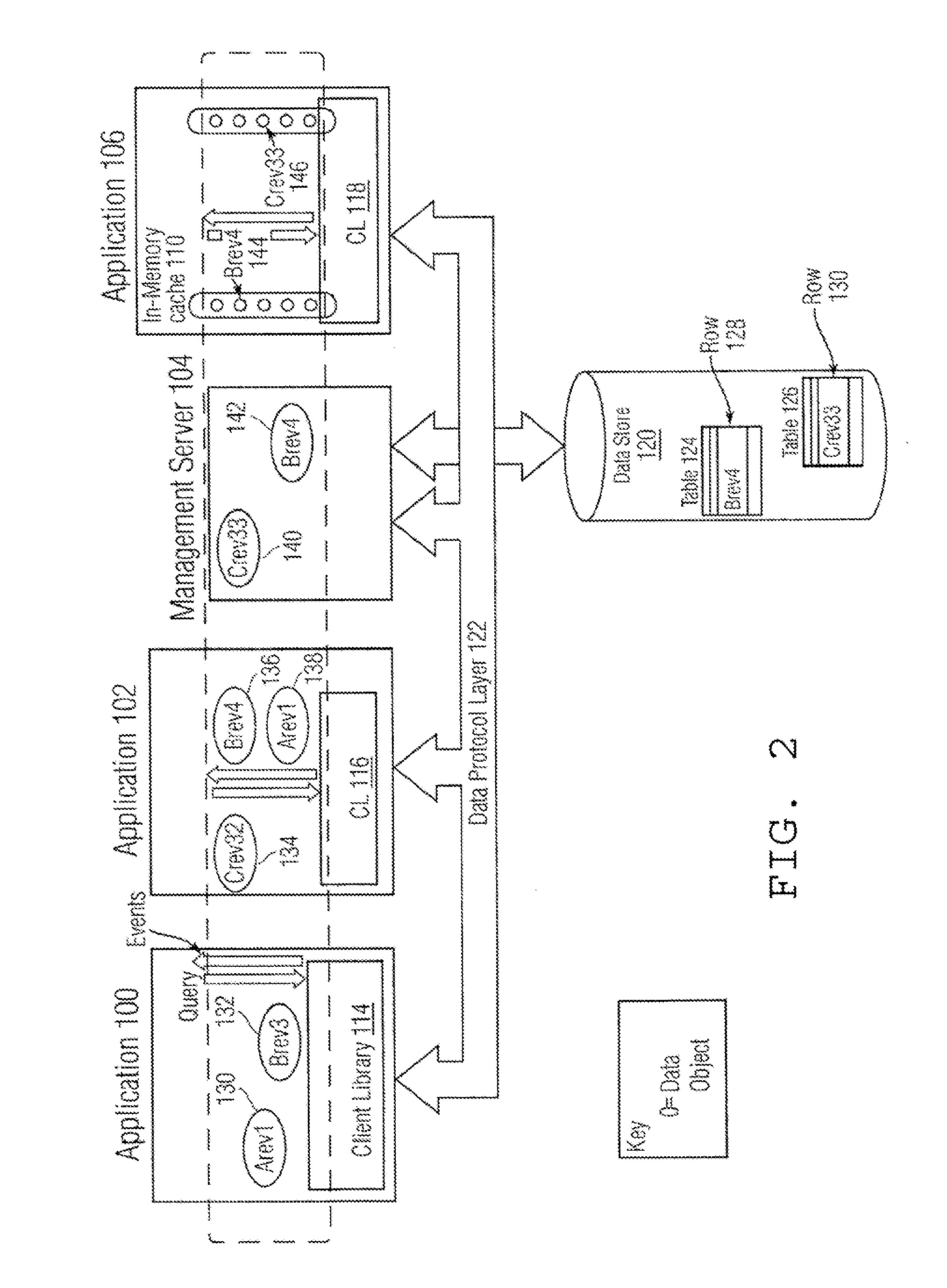System for sharing data objects among applications
a technology for sharing data objects and applications, applied in the field of distributed data and application management infrastructure, can solve the problems of increasing the number of individual components that make up an application or system, difficult to effectively manage an operational system, and inability to understand the effects of changes
- Summary
- Abstract
- Description
- Claims
- Application Information
AI Technical Summary
Benefits of technology
Problems solved by technology
Method used
Image
Examples
example 1
Data Query Example 1
[0320]Application 100 desires to know all Humans in system over 30 years of age. The application issues a query: “Select h from Human h where h.Age >30” to Client Library 114. In turn the client library 114 issues the query as an instruction into the management infrastructure 15.
[0321]Management server 104 receives the instruction, locates metadata describing the data type “Human” in its internal data type definition representation. Management server 104 then identifies Human as a “Persisted” data type, indicating Human objects are stored in data store 120. The query is translated by management server 104 into data store native query language, and a query is executed query against data store 120. In response, the data store 120 returns Recordset of native data rows to Management Server 104. Management Server 104 translates, i.e., places, native data rows into Recordset of data objects, and validates each data object against Security Data Objects of Data Type 220 ...
example 2
Data Query Example 2
[0324]The following example of a Data Query demonstrates how a query can be used to find data in stored among various servers when a Data Type indicates that objects of its type are not “persisted”, and not stored in a single database-backed data store, without an application knowing that the data was not persisted. Portions of this example also illustrate how a management server can query multiple data stores and combine the results into a single return to a querying application. This example shows how a query against non-persisted data can utilize linked properties, and how linked properties can be used as distributed data object pointers to access data existing in other applications / data stores.
[0325]Application 100 desires to know all Instant Messages in system that were destined to a certain person. Application issues Query “Select i from InstantMessage i where i.To.Name=‘Joe Smith” to Client Library 114. Client Library 114 issues Query as Instruction into s...
modification example
Data Object Modification Example
[0328]The example below illustrates how data may be modified within the system and posted to the system. The system handles storing the data appropriately and notifying any interested subscribers that there was a data change, and whether the data changes was “into-scope,”“in-scope,” or “out-of-scope.” This example also shows how a query language can be used to apply access control or security rules to a write.
[0329]Application 100 wishes to modify a Human Data Object it retrieved in the query in “Data Query Example”. Application 100 obtains a reference handle to a copy of the Data Object in Object Pool 406, either by using a handle it was holding to the Data Object or by asking the Object Pool for a handle. Application 100 sets the appropriate fields on the Data Object. As the Data Object's fields are changed, a record of the copy of the fields before their modification is stored on the Data Object. Application 100 calls a Post method on Client Librar...
PUM
 Login to View More
Login to View More Abstract
Description
Claims
Application Information
 Login to View More
Login to View More - R&D
- Intellectual Property
- Life Sciences
- Materials
- Tech Scout
- Unparalleled Data Quality
- Higher Quality Content
- 60% Fewer Hallucinations
Browse by: Latest US Patents, China's latest patents, Technical Efficacy Thesaurus, Application Domain, Technology Topic, Popular Technical Reports.
© 2025 PatSnap. All rights reserved.Legal|Privacy policy|Modern Slavery Act Transparency Statement|Sitemap|About US| Contact US: help@patsnap.com



